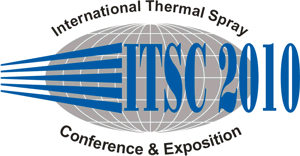
|
2209 |
|
Degradation mechanisms of thermally sprayed
coatings in chloride containing electrolytes
|
|
Jussi Laurila / Tampere University, Finland Kari Niemi / Tampere University of Technology, Department of Materials Science, Finland Petri Vuoristo/ Tampere University of Technology, Department of Materials Science, Finland |
|
Thermally sprayed cermet coatings are widely used in pulp and paper industry and other applications in corrosive conditions where chloride is present. In these conditions corrosion resistance and also wear resistance of the coatings are the most important characteristics. Corrosion resistance can be improved by sealing the corrosion sensitive base material surface under the coating from the chlorine containing environment. Test materials were thermally sprayed WC-CoCr, Cr3C2-25NiCr and Sanicro 28 coatings prepared using conventional HVOF and arc spray techniques. The degradation of the coating and base material surface was characterized using microhardness tests, optical and scanning electron microscopy, and by EDX microanalysis. Also XRD measurements were carried out to evaluate the changes in phase proportion during the corrosion exposure. Wear resistance of the coatings was evaluated using rubber-wheel abrasion tests. In this work ASTM G48 corrosion testing standard was utilized in corrosion testing of corrosion resistant thermally sprayed coatings. As it is widely known, in demanding chlorine containing corrosion conditions it is essential in order to understand where to in the structure of the coating the corrosion is concentrating. In the used corrosion conditions the Sanicro 28 coating was corroded inside the coating material. Corrosion resistant Cr3C2-NiCr cermet coating was corroded also between the coating and the base material and the adhesion between the base and the coating was lost after a 1 day exposure. Unexpectedly WC-CoCr coating gave the best performance in the tests carried out. |